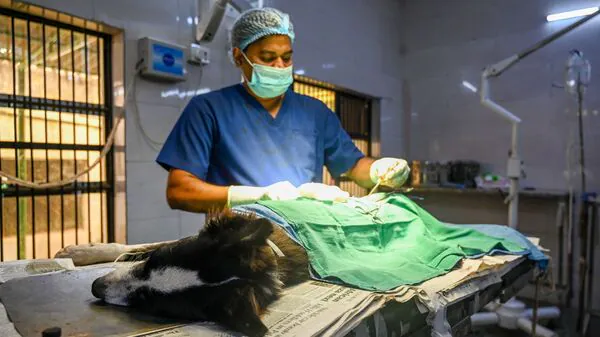Explained: Why India Wants Medical Colleges To Lead The Fight Against Rabies
In a comprehensive advisory issued on 16 September 2025, the government, through the National Medical Commission (NMC) and the Ministry of Health and Family Welfare (MoHFW), directed all medical colleges and institutions to spearhead the fight against this 100% fatal but preventable disease. The move aims to strengthen the NRCP by focusing on training, ensuring drug availability, and scaling up surveillance and public awareness.
Mint explains what the new directives mean for India's long-term rabies elimination strategy.
Why has the government issued this directive?Reported dog bite cases rose from 2.2 million in 2022 to 3.05 million in 2023 and 3.7 million in 2024. In January 2025 alone, over 400,000 cases were recorded.
Human deaths also increased, from 21 in 2022 to 54 in 2024, with one death reported in January 2025, according to the fisheries, animal husbandry and dairying ministry (MoFAHD).
Also Read | Mint Explainer: The concerns around India's rabies vaccine supplyTo counter this growing threat, the directives have been issued. The advisory is part of the National Action Plan for Dog-Mediated Rabies Elimination by 2030 (NAPRE), a strategic goal jointly launched by the MoHFW and MoFAHD. Medical colleges and institutions play an important role in ensuring timely case management, surveillance, and community awareness, which are all essential for achieving this national goal.
What are medical colleges and hospitals expected to do?The NMC has directed institutions to:
- Train staff and students on rabies management and post-exposure -prophylaxis (PEP) Ensure sustained supply of anti-rabies vaccine (ARV) and anti-rabies serum (ARS) Maintain an animal bite exposure (ABE) Register Report all animal bite and suspected rabies cases to state health departments and upload data to the Integrated Health Information Platform (IHIP) Promote public awareness by displaying educational material in OPDs, wards, and emergency areas
Surveillance and reporting are vital because they give health authorities real-time visibility into animal bites and rabies cases. A dedicated ABE register and timely uploads to the IHIP help track outbreaks, flag high-risk areas, and guide the distribution of vaccines and serums. Without accurate data, prevention and response efforts risk being delayed or misdirected.
What does this mean for the pharma industry?Demand for vaccines and immunoglobulins is set to rise. Pharmaceutical companies must strengthen their production capacity, secure critical raw materials, and enhance distribution to meet the increased need.
This aligns with the strategic goals of companies like Bharat Serums and Vaccines (BSV), which are working to support India's 'Zero by 30' goal by supplying these drugs to both public and private health systems and hospitals.
Zero by 30 is India's commitment, under the WHO-led global initiative, to eliminate dog-mediated human rabies deaths by 2030.
What about the Supreme Court ruling on stray dogs?The recent Supreme Court of India ruling on stray dog management underwent a significant change after facing protests from animal welfare groups like PETA. Initially, a bench ordered civic bodies to confine all stray dogs in shelters without releasing them back.
Also Read | SC on stray dogs: What the order says, how big is the menace, and other pointsHowever, in a revised ruling on 22 August 2025, a larger bench mandated that stray dogs must be sterilised and vaccinated and then released back into their original localities. The new order was praised by animal welfare organisations as a humane and scientifically-backed approach to population control.
Legal Disclaimer:
MENAFN provides the
information “as is” without warranty of any kind. We do not accept
any responsibility or liability for the accuracy, content, images,
videos, licenses, completeness, legality, or reliability of the information
contained in this article. If you have any complaints or copyright
issues related to this article, kindly contact the provider above.
Most popular stories
Market Research

- Ozak AI Partners With Pyth Network To Deliver Real-Time Market Data Across 100+ Blockchains
- Blockchainfx Raises $7.24M In Presale As First Multi-Asset Super App Connecting Crypto, Stocks, And Forex Goes Live In Beta
- B2PRIME Secures DFSA Licence To Operate From The DIFC, Setting A New Institutional Benchmark For MENA & Gulf Region
- BTCC Summer Festival 2025 Unites Japan's Web3 Community
- From Zero To Crypto Hero In 25 Minutes: Changelly Introduces A Free Gamified Crash Course
- BILLY 'The Mascot Of BASE' Is Now Trading Live On BASE Chain






















Comments
No comment